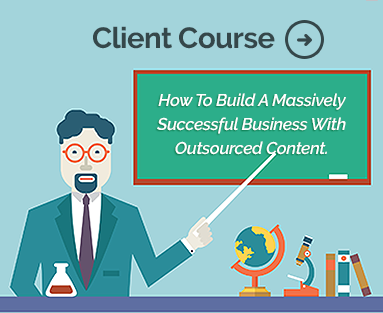Are you ready to supercharge your marketing strategy and drive more traffic to your website? Understanding the nuances of bottom vs. top-of-the-funnel keywords could be the game-changer you’ve been searching for! In the vast world of digital marketing, not all keywords are created equal—each serves a unique purpose in guiding potential customers through their journey.
Whether you’re looking to capture those just starting their research or seal the deal with ready-to-buy prospects, mastering these keyword types is essential. Join us as we dive into the captivating realm of funnel keywords, unraveling their differences and revealing how to leverage them effectively for maximum impact on your business growth!
Top Funnel Keywords
Individuals in the early stages of their buying journey often use top-funnel keywords. These keywords are usually broad and focus on general topics. For example, phrases like “how to” or “what is” are common at this stage. Users are seeking information rather than making a purchase.
A skilled content writer can create engaging articles or blog posts around these keywords. This content helps attract a larger audience looking for answers. Top funnel keywords drive traffic to your website and build brand awareness. They are essential for establishing authority in your niche. You can nurture leads and guide them down the funnel by focusing on these keywords.
Bottom Funnel Keywords
Bottom funnel keywords are the terms people use when they are close to making a purchase decision. These keywords usually show clear intent to buy or take action. For example, someone searching for “best decontamination services near me” is likely looking for a service to hire.
By targeting these specific keywords, you can reach potential customers who are ready to convert. In your SEO blog posts, it’s important to include these keywords to match user intent. Using bottom-funnel keywords helps your content appear at the right moment in a customer’s journey, leading to higher conversion rates and more sales.
Differences Between Bottom vs. Top -of-the-Funnel Keywords
Understanding the differences between bottom and top-of-the-funnel keywords is crucial for effective marketing. Each type of keyword serves a unique purpose in the buyer’s journey and can significantly impact your SEO strategy. Here are some of their differences:
User Intent
User intent is crucial in distinguishing between the bottom and top of the funnel keywords. At the top of the funnel, users are often seeking general information. They may ask questions like “What is SEO?” or “How to improve website traffic?” This indicates that they are in the research phase and not ready to make a purchase yet.
On the other hand, bottom funnel keywords show a stronger intent to buy. Users searching for terms like “buy SEO tools” or “best SEO services near me” are likely ready to decide. Understanding user intent helps you create content that matches their needs.
Traffic Volume
Traffic volume varies significantly between the bottom and top of the funnel keywords. Top funnel keywords usually attract a larger audience since they are more general and broad. For example, phrases like “how to cook pasta” can bring in many searches. This can lead to higher website traffic, making them valuable for awareness.
However, bottom funnel keywords tend to have lower search volume. These keywords are more specific, targeting users who are ready to make a purchase. For instance, “buy organic pasta online” will attract fewer searches but likely with a higher intent to convert. Balancing traffic volume with conversion potential is key to a successful SEO strategy.
Conversion Rates
Conversion rates differ greatly between bottom and top of the funnel keywords. Bottom funnel keywords often lead to higher conversion rates. These keywords target users who are ready to buy or take action. For example, phrases like “buy running shoes online” show clear intent to purchase.
In contrast, top-funnel keywords have lower conversion rates. They attract users who are still researching and exploring options. Phrases like “best-running shoes” may draw a lot of traffic but don’t necessarily lead to immediate sales. Understanding this difference helps businesses tailor their strategies to improve overall conversions.
Keyword Examples
Keyword examples help illustrate the differences between bottom and top-of-the-funnel keywords. Top-of-the-funnel keywords often include broad terms. For instance, “fitness tips” or “healthy recipes” attract a general audience. These keywords focus on awareness and education.
In contrast, bottom funnel keywords are more specific. Examples include “buy running shoes” or “best protein powder for weight loss.” These keywords indicate a strong intent to purchase. Knowing these examples can guide marketers in creating targeted content for each stage of the buyer’s journey.
SEO Approaches
Different SEO approaches are needed for bottom and top of the funnel keywords. Top funnel keywords require a focus on content that informs and engages. This can include blog posts, videos, and infographics. Tools like SemRush can help identify popular top funnel keywords.
Bottom funnel keywords demand a more targeted strategy. Optimizing product pages and landing pages is essential here. These keywords usually lead to higher conversion rates. Using the right tools and techniques ensures that content aligns with user intent at each stage of the funnel.
Balancing Strategies
Balancing strategies for bottom- and top-of-the-funnel keywords is crucial for effective SEO. Each type of keyword serves a different purpose in the customer journey. Top-of-the-funnel keywords attract a wide audience and build brand awareness.
Bottom funnel keywords focus on conversion and sales. A successful strategy includes content for both stages. For example, informative articles can capture interest, while targeted landing pages can drive purchases. It’s important to analyze performance to find the right mix regularly. This balance ensures that your SEO efforts lead to sustained traffic and conversions.
Unlocking Success: The Differences Between Bottom and Top-of-the-Funnel Keywords
In summary, understanding the difference between bottom and top-of-the-funnel keywords is crucial for effective marketing. By using both types of keywords, you can create a balanced strategy that supports every stage of the buyer’s journey. This approach will ultimately lead to better engagement and conversions for your business.
Ready to convert readers into customers through these keywords? Consider hiring a content writer to assist you! Book an appointment to learn more.




Comments are closed.